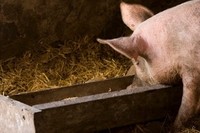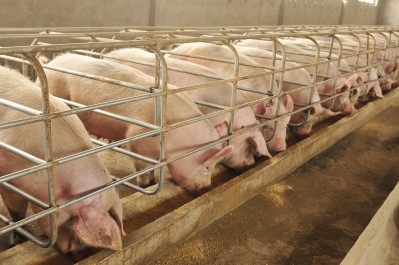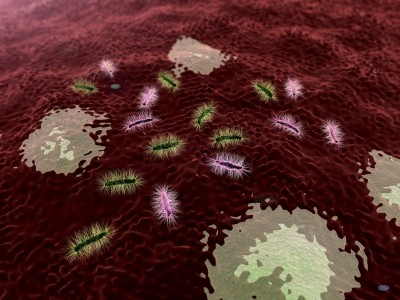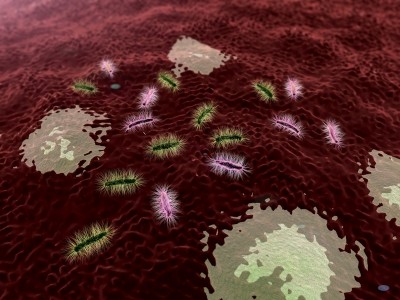Sugar beets may offer feed alternative, boost young pigs' gut health

Researchers at the University of Alberta studied how much of the feed ingredient can be used in the diet of weaned pigs before a downturn in growth performance is seen, said Ruurd Zijlstra, professor in the department of agricultural, food and nutritional science at the University of Alberta.
“The underlying theme of this part of our research program is to study how we can have other types of feed ingredients, especially for young pigs,” he told FeedNavigator. “How can we use the pigs’ omnivoric capacity to make use of alternative ingredients and turn it back into a high quality protein?”
The work on alternative feed ingredients started several years ago with products like fava beans and different grains, he said. The overarching goal was to find a way to turn inexpensive or low quality material, like sugar beet pulp, into a protein source for people.
“We noticed that young pigs, a week after weaning, can handle a good deal more fiber then we give them credit for,” he said. “Why not try an ingredient that has so much fiber that you can run into a biological limit for the pigs?”
Additionally, no one had previously looked at what levels of sugar beet pulp can be included in a diet, he said.
“If you look at the composition of the sugar beet pulp, the fiber has some unique properties,” he said. “Part of it is very wet, and there is some evidence out there that it may have a good effect on gut health.”
In the experiment, researchers found that there were levels of SBP that could be included in the diet without altering pigs’ growth performance,” said the researchers. “These pigs maintained ADFI [average daily feed intake], ADG [average daily gain] and G:F [gain to feed ratio] with diets containing as much as 65 g ADF/kg [acid detergent fiber], but could not maintain growth performance for diets containing up to 101 g ADF/kg,” they added.
Future research
SBP may offer a prebiotic effect for pigs, said Zijlstra. Including an amount of sugar beet pulp in the diet of a young pig may boost gut health and maintain metabolic health, said Zijlstra.
“The overarching theme here is, ‘How can we maintain gut health in young pigs,’” he said. The ingredient may offer a way to reduce antibiotic use bypromoting the growth of good bacteria in the gut, he added.
However, there is room for future research examining that link and what it could mean for gut health and fecal consistency when pigs are faced by a potential disease challenges, he said.
“What is so unique about fiber or starch and how may that potentially play a role in maintaining gut health or metabolic health in pigs?” he said. “And, this line of research has an element of maintaining gut health and using the pig as a model for humans.”
Experiment
In the experiment, 220 pigs were split into 55 pens and given a series of diets containing sugar beet pulp starting one week post-weaning, said researchers. The first phase lasted for two weeks and the second phase for three weeks.
The five experimental diets tested included a control wheat-based diet, and that diet with 60, 120, 180 or 240g/kg sugar beet pulp replacing wheat grain, they said.
Pigs, feed added and left over feed were weighed on a weekly basis, they said. Average daily feed intake, ADG and G:F were determined and fecal samples were collected.
Results
One surprise in the research findings was how much of the pulp young pigs would eat, said Zijlstra.
“Increasing inclusion of SBP in Phase 1 diets linearly reduced the CATTD [apparent total tract digestibility coefficient] of DM [dry matter] and GE [gross energy] by 0.04 and CP [crude protein] by 0.08 and linearly reduced the calculated diet NE value by 0.35 MJ/kg, but did not affect diet DE [digestible energy] value,” said researchers. “Increasing inclusion of SBP in Phase 2 diets quadratically reduced the CATTD of DM by 0.02 and of GE by 0.01, linearly reduced the CATTD of CP by 0.06, linearly increased diet DE value by 0.51 MJ/kg and quadratically increased the calculated diet NE value by 0.29 MJ/kg.”
Increasing the amount of SBP in the experiment diet reduced ADFI and ADG linearly, they said. However, both results were seen more clearly toward the end of the experiment.
“For the entire trial, increasing inclusion of SBP quadratically reduced G:F,” they said. “Increasing inclusion of SBP linearly increased G:F for day 1–7, decreased G:F for day 15–21, and did not affect G:F for day 8–14 and day 29–35.”
Final body weight was highest for the pigs getting 60 g SBP/kg in their diet when compared to the others, they said. “Among diets with 60–240 g SBP/kg, inclusion of 60 g SBP/kg diet was the sole inclusion for which each of ADFI, ADG and G:F for day 1–35 did not differ (P > 0.05) from the diet without SBP,” they added.
Source: Animal Feed Science and Technology
Title: Diet nutrient digestibility and growth performance of weaned pigs fed sugar beet pulp
DOI: doi.org/10.1016/j.anifeedsci.2015.11.005
Authors: L.F. Wang, E. Beltranena, R.T. Zijlstra
FeedNavigator is running a free webinar on piglet productivity this Friday, 12 February. Register to hear our expert line-up discuss gut health, sow nutrition and nursery diets and more.














